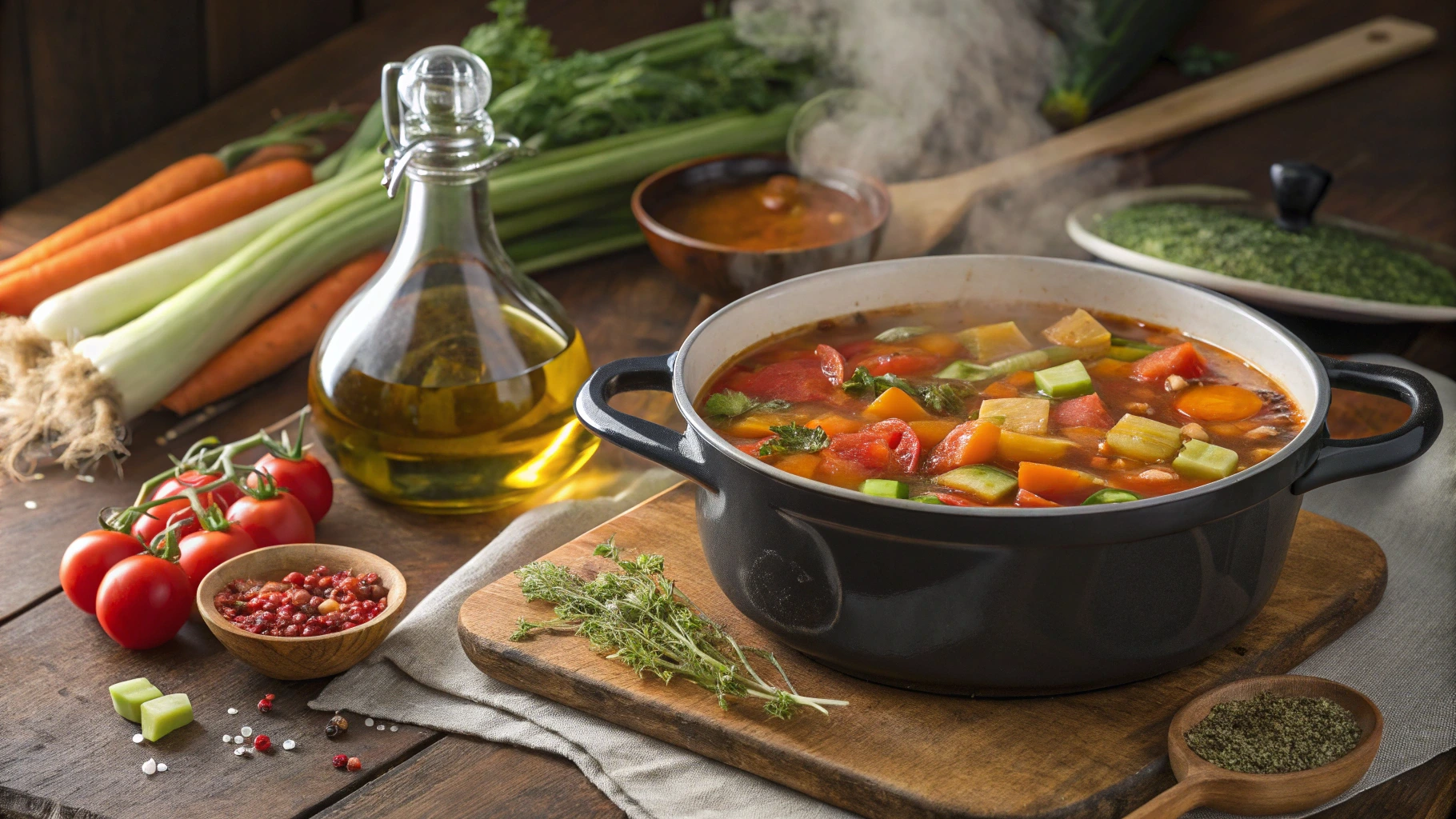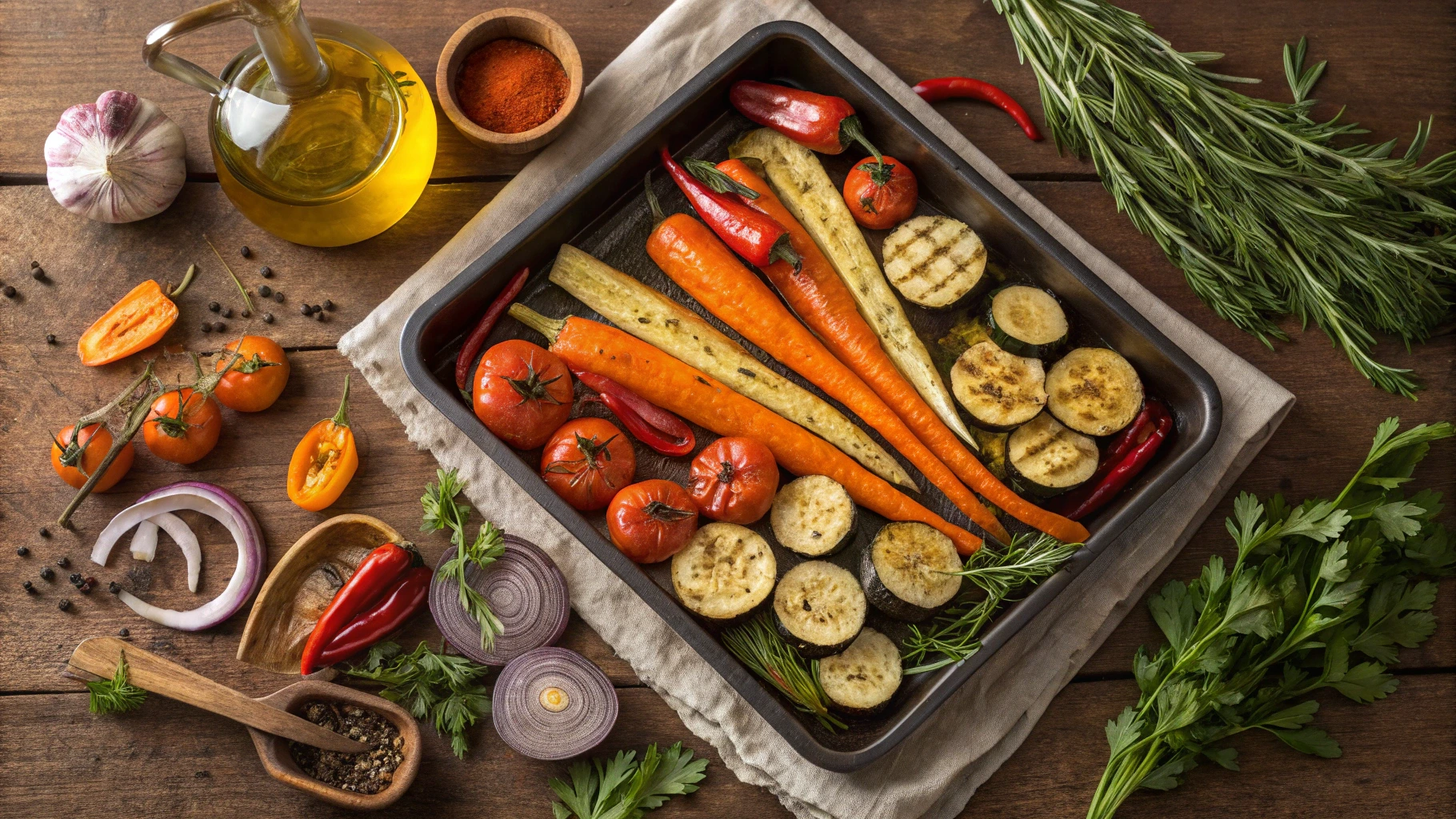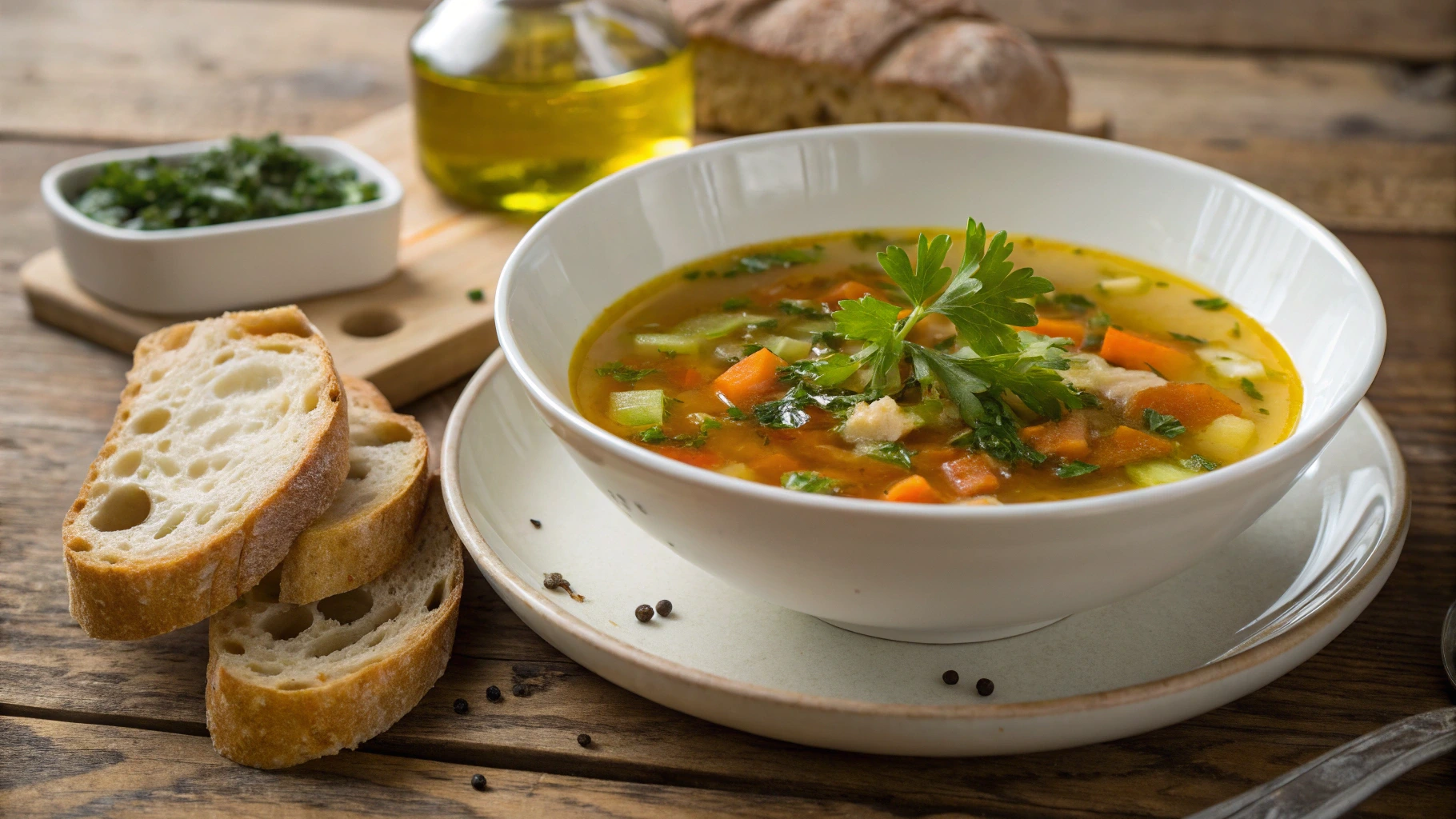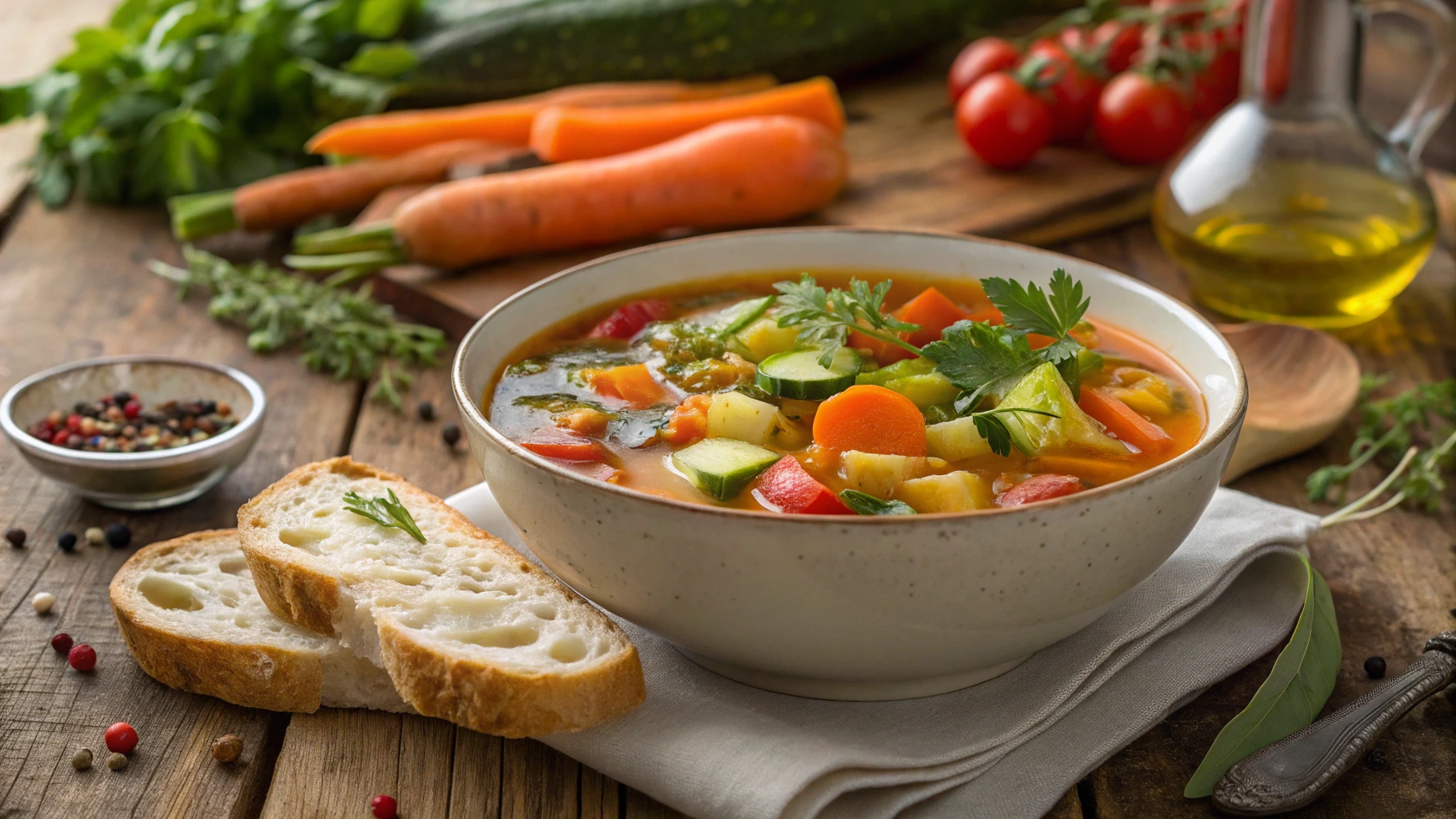Introduction
Vegetable soup is a comforting and versatile dish, loved for its simplicity and nutritional benefits. However, not all vegetable soups are created equal. The key to making a truly delicious soup lies in balancing flavors, selecting quality ingredients, and employing the right cooking techniques. If you’ve ever wondered, How do you increase the flavor of vegetable soup?, this guide will provide you with practical steps and expert tips to transform your soup into a flavorful masterpiece.
How to Increase the Flavor of Vegetable Soup
Creating a truly flavorful vegetable soup requires a mindful approach, paying attention to every step of the process. From ingredient selection to cooking techniques, each decision impacts the final taste. If you’ve wondered, How do you increase the flavor of vegetable soup?, these strategies will help you achieve a soup that’s rich, satisfying, and full of depth.
Start with a Strong Base
The base of your soup is the cornerstone of its flavor. A high-quality stock or broth serves as a flavorful foundation. Opt for homemade vegetable stock whenever possible, as it allows you to control the balance of flavors. If using store-bought broth, choose one with low sodium so you can adjust seasoning to your liking. For an added boost, simmer your stock with additional ingredients like dried mushrooms, herbs, or parmesan rinds to infuse more depth into the base. Even water can work as a base if you sauté aromatics thoroughly and add flavorful vegetables.
Layer Flavors Gradually
Building flavor is a process, and layering ingredients is key to achieving complexity. Start by sautéing onions, garlic, and celery in olive oil or butter to create a rich, aromatic base. Add spices like cumin, paprika, or turmeric early on to toast them, releasing their essential oils and maximizing their impact. As you add vegetables, incorporate them in stages based on their cooking times—firmer vegetables like carrots and potatoes go in first, while softer ones like zucchini and spinach are added later. This ensures that each ingredient contributes its best texture and taste without becoming overcooked.

Balance Seasoning Thoughtfully
Seasoning can make or break your soup. Add salt and pepper incrementally, tasting as you go, to avoid over-salting. Incorporate acidity, such as a splash of lemon juice or vinegar, to brighten the flavors and create contrast. A hint of sweetness, like a touch of honey or a pinch of sugar, can balance the tanginess of tomatoes or the bitterness of greens. Don’t forget to include umami-rich ingredients like miso paste, soy sauce, or nutritional yeast to deepen the flavor profile. Balancing these elements ensures your soup tastes harmonious and satisfying.
Finish with Flair
The final touches can elevate your soup from good to exceptional. Garnishes such as chopped fresh herbs (parsley, cilantro, or dill) provide a burst of freshness and color. A drizzle of olive oil, a dollop of sour cream, or a swirl of pesto can add richness and complexity. For texture, sprinkle toasted seeds, croutons, or grated cheese on top. These finishing touches not only enhance the flavor but also create a visually appealing presentation that makes your soup more inviting.
By following these methods with attention to detail, you can significantly enhance the flavor of your vegetable soup. Each step, from choosing the right base to perfecting the finishing touches, plays a vital role in creating a dish that’s not only nutritious but also irresistibly delicious.
Understanding the Basics of Vegetable Soup
To master vegetable soup, it’s essential to understand its building blocks. How do you increase the flavor of vegetable soup? begins with the fundamentals.
- Fresh ingredients are key: Always use fresh and seasonal vegetables for the best results.
- Choose complementary vegetables: Some vegetables, like carrots, celery, and onions, provide a natural sweetness, while others, like tomatoes or kale, add complexity.
- Understand your stock: Homemade stock or high-quality store-bought versions are critical to creating a flavorful base.
Furthermore, remember that vegetable soup is incredibly versatile. Experiment with different combinations of vegetables to discover new flavors while sticking to the essentials of balance and harmony.
Building Flavor from Scratch
Building flavor from scratch is one of the most effective ways to ensure a delicious soup.
- Sauté aromatics: Start by cooking onions, garlic, and celery in oil or butter. This step releases their flavors, creating a strong foundation.
- Add layers gradually: Introduce spices like cumin or paprika early on so they can infuse the soup.
- Deglaze the pot: Use wine, vinegar, or broth to scrape up browned bits from the bottom of the pot. These caramelized bits contribute a deep, rich flavor.
- Incorporate slow-cooked elements: Roasting vegetables or simmering them longer brings out their natural sweetness.
By thoughtfully layering each component, you can develop a soup that is both rich and flavorful.
Enhancing Flavor During Cooking
To answer the question, How do you increase the flavor of vegetable soup?, you must focus on flavor enhancement during cooking.
- Season as you go: Add salt at different stages to draw out the natural flavors of vegetables without overwhelming them.
- Use herbs strategically: Add hearty herbs like thyme and bay leaves early, but save delicate ones like parsley for the end.
- Adjust consistency: If your soup feels too thin, blend part of it to create a creamy texture without adding heavy ingredients.
- Incorporate umami: Ingredients like soy sauce, miso, or nutritional yeast can add depth.
These steps ensure the soup develops a well-rounded and satisfying taste.
Advanced Techniques for Flavor Boosting
If you want to elevate your vegetable soup to gourmet status, incorporating advanced techniques can make a remarkable difference. These methods go beyond the basics, helping you achieve deeper, more complex flavors and a satisfying culinary experience.
Add Acid
Acidity is a game-changer when it comes to enhancing flavors. A splash of lemon juice, vinegar, or even tomatoes can brighten the overall taste of the soup, making the other ingredients pop. For best results, add acid toward the end of cooking to preserve its sharpness. Consider using balsamic vinegar for a touch of sweetness, apple cider vinegar for tang, or fresh lime juice for a zesty kick. The right amount of acidity can balance richness, counteract saltiness, and transform a dull broth into a vibrant base.
Include Dairy or Plant-Based Creams
Adding a creamy element can lend a luxurious texture and richer taste to your soup. For dairy options, incorporate heavy cream, sour cream, or yogurt, ensuring you stir them in at the very end to prevent curdling. If you prefer plant-based alternatives, try coconut milk, cashew cream, or oat milk, all of which add a subtle sweetness and silky smoothness. Blending in soaked cashews or silken tofu also works wonders for creaminess while keeping the soup light and nutritious.
Roast Your Vegetables
Roasting vegetables before adding them to the soup is a surefire way to develop bold and complex flavors. The high heat of roasting caramelizes the natural sugars in vegetables, creating a smoky, slightly sweet depth. Try roasting carrots, bell peppers, zucchini, or even onions and garlic with a drizzle of olive oil and a sprinkle of salt. For an extra layer of flavor, roast a few vegetables until they’re slightly charred—this adds a unique smokiness to the final dish. After roasting, deglaze the baking sheet with broth or wine and pour the flavorful liquid into your soup.

Experiment with Spices
Spices are the soul of any great soup, and knowing how to use them can set your dish apart. Toast whole spices like cumin seeds, coriander, or mustard seeds in a dry pan before grinding or adding them. This simple step releases their essential oils, making their flavors more robust and aromatic. Layering spices throughout the cooking process is equally important. Add bolder spices, like smoked paprika or turmeric, early on, and finish with delicate ones, such as ground cinnamon or nutmeg, at the end. Don’t shy away from spice blends like garam masala, ras el hanout, or herbes de Provence to create a globally inspired soup.
By applying these advanced techniques, your vegetable soup can transcend ordinary expectations, delivering a bowl brimming with richness, depth, and complexity. These small yet powerful adjustments ensure your soup is as unforgettable as it is flavorful.
Making Adjustments at the End
The final touches can make all the difference in your soup. When thinking about How do you increase the flavor of vegetable soup?, don’t overlook this crucial step.
- Balance flavors: Taste your soup and adjust for salt, acidity, and sweetness. A pinch of sugar or a splash of vinegar can work wonders.
- Add freshness: Finish with freshly chopped herbs, like cilantro or basil, for a burst of flavor.
- Incorporate texture: Add a drizzle of olive oil, a sprinkle of nuts, or croutons for a contrast in texture.
- Serve immediately: Vegetable soup is best enjoyed fresh, but it can also be refrigerated or frozen for later.
By fine-tuning your soup just before serving, you ensure every bowl is perfectly balanced and flavorful.
Customizing Vegetable Soup to Satisfy Different Flavor Preferences
Vegetable soup is highly adaptable, making it easy to cater to different preferences.
- Add heat for spice lovers: Include chili flakes, hot sauce, or fresh peppers to amp up the heat.
- Make it heartier: Add grains like barley or quinoa or legumes like lentils and chickpeas for a filling meal.
- Focus on textures: Blend part of the soup for creaminess while leaving some vegetables whole for a varied texture.
- Cater to dietary needs: Use gluten-free or vegan ingredients as needed without compromising flavor.
This flexibility allows you to create a soup that appeals to any audience while remaining delicious.
Serving Tips to Maximize the Flavor of Vegetable Soup
Presentation matters as much as taste when serving vegetable soup.
- Use garnishes wisely: Add a dollop of yogurt, a swirl of pesto, or grated cheese for visual and flavorful appeal.
- Pair with sides: Serve your soup with crusty bread, a simple salad, or crackers for a complete meal.
- Use the right bowl: Wide, shallow bowls help the soup cool evenly and make it easier to eat.
- Serve warm, not boiling: Ensure your soup is at a comfortable temperature to enjoy all its flavors.
By paying attention to these details, you can turn a simple bowl of soup into an extraordinary dining experience.

FAQs about Vegetable Soup
Can I use frozen vegetables instead of fresh ones?
Yes, you can absolutely use frozen vegetables in place of fresh ones. Frozen vegetables are often picked and frozen at their peak freshness, preserving their nutrients and flavor. However, fresh vegetables may provide better texture and brightness. If using frozen vegetables, add them directly to the soup during cooking without thawing to retain their texture.
What are the best herbs for vegetable soup?
The best herbs for vegetable soup include thyme, parsley, and bay leaves, which add depth and aroma. Other excellent choices are basil, dill, cilantro, and rosemary, depending on the flavor profile you want. Fresh herbs should be added near the end of cooking to maintain their brightness, while dried herbs can be added earlier to infuse the broth.
How can I fix soup that’s too salty?
If your soup is too salty, try these fixes:
- Add a splash of water, broth, or unsalted stock to dilute the saltiness.
- Toss in a raw potato and simmer it in the soup for 15–20 minutes. The potato will absorb some of the salt.
- Balance the flavor by adding acidity (like lemon juice or vinegar) or sweetness (a pinch of sugar or honey).
What are vegan substitutes for cream in soup?
For vegan-friendly creaminess, you can use:
- Coconut milk or coconut cream for a rich, slightly sweet flavor.
- Cashew cream made by blending soaked cashews with water.
- Silken tofu blended into the soup for a smooth texture.
- Plant-based milk, like almond or oat milk, which are lighter options.
How do I store and reheat leftover vegetable soup?
Store vegetable soup in an airtight container in the refrigerator for up to 3 days. To reheat, warm it gently on the stove over medium heat, stirring occasionally to prevent sticking. For quicker reheating, you can use the microwave, but do so in intervals, stirring in between, to ensure even heating.
Can vegetable soup be frozen?
Yes, vegetable soup freezes very well! Allow the soup to cool completely before transferring it to freezer-safe containers or bags. Freeze in portion-sized amounts for convenience. To reheat, thaw the soup in the refrigerator overnight and then warm it on the stove or in the microwave.
How do I make my soup more flavored?
To make your soup more flavorful, focus on layering flavors:
- Use a high-quality stock or broth as your base.
- Sauté aromatics like onions, garlic, and celery before adding liquids.
- Add umami ingredients such as miso, soy sauce, or nutritional yeast.
- Brighten the soup with a splash of lemon juice or vinegar before serving.
How do you fix tasteless vegetable soup?
To fix a bland soup, try these tips:
- Season with salt and pepper incrementally, tasting as you go.
- Add a touch of acidity, like lime juice or apple cider vinegar, to awaken flavors.
- Incorporate fresh herbs or spices like paprika, cumin, or chili flakes for a flavor boost.
- Blend a portion of the soup to improve its texture and enhance the taste.
By following these tips, your vegetable soup will always be packed with flavor and perfectly satisfying!
Looking for more hearty meal ideas? Check out our Chicken Vegetable Soup recipe for a healthy and filling dinner recipe.
Conclusion
Crafting a flavorful vegetable soup is an art that combines fresh ingredients, thoughtful techniques, and careful finishing touches. By following the steps outlined here, you can create a soup that’s not only delicious but also customizable and satisfying. Whether you’re serving it as a main course or a side dish, a well-made vegetable soup is sure to impress. So, get creative in the kitchen and enjoy the process of making a dish that warms both the body and soul.
Happy cooking!

